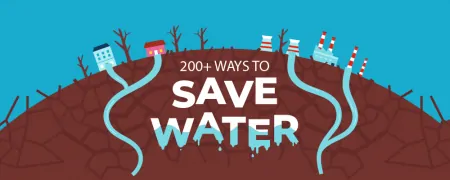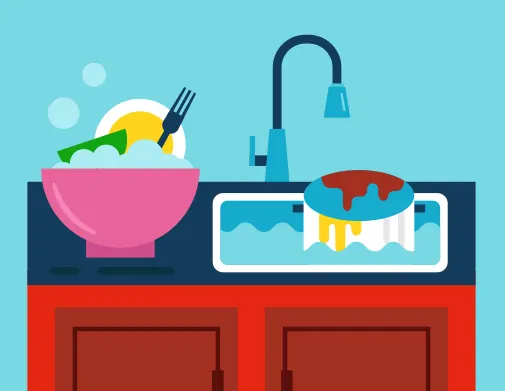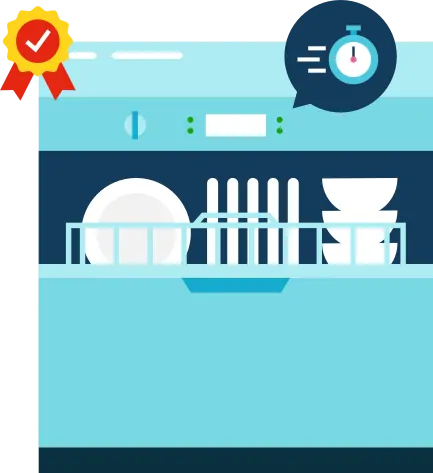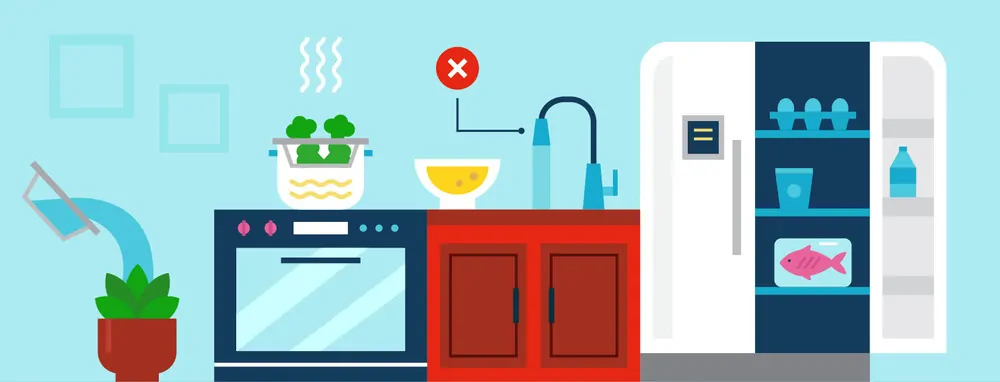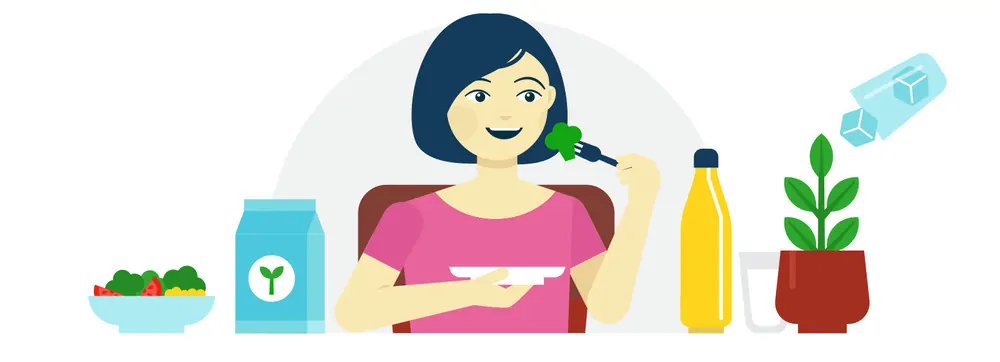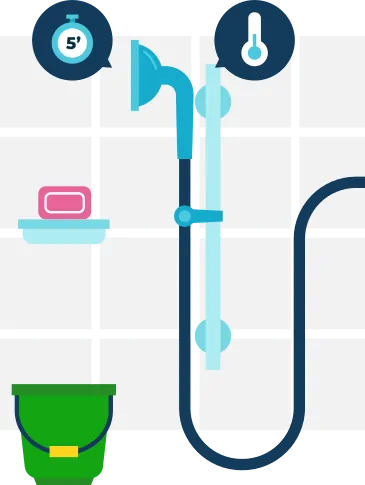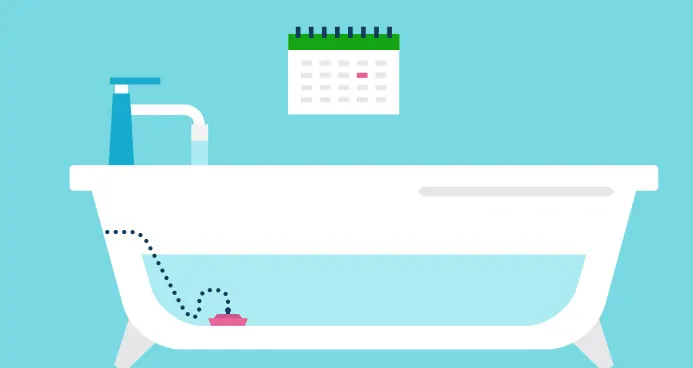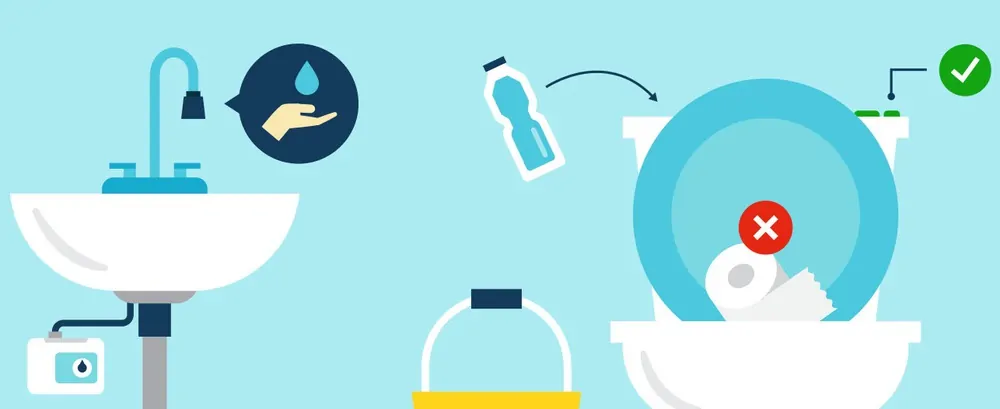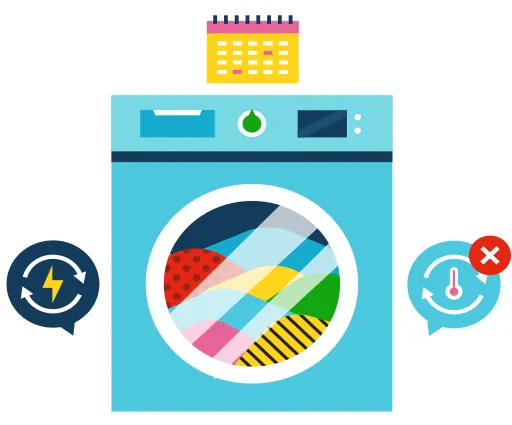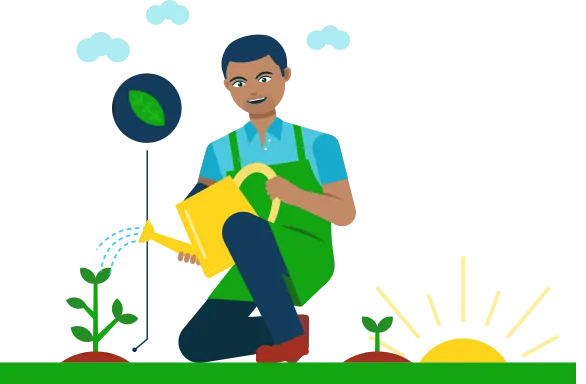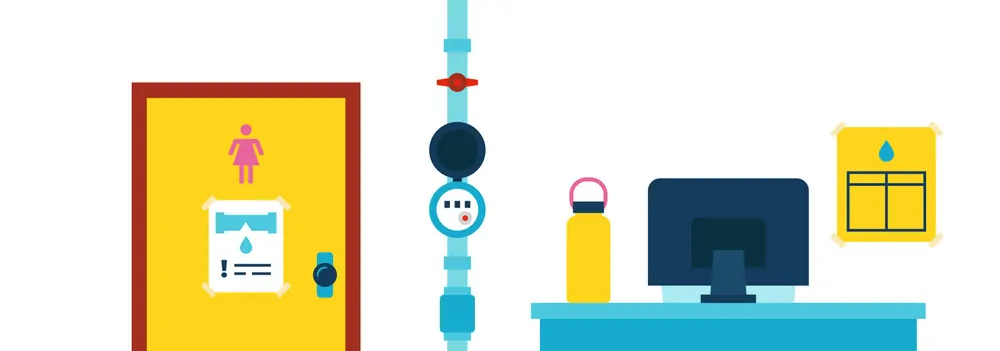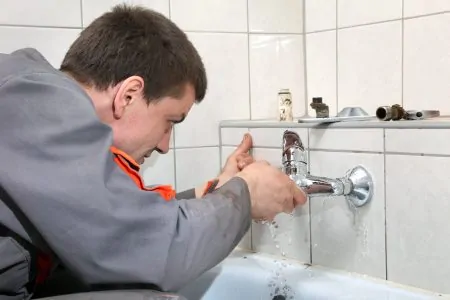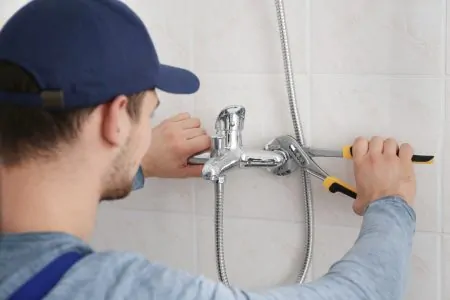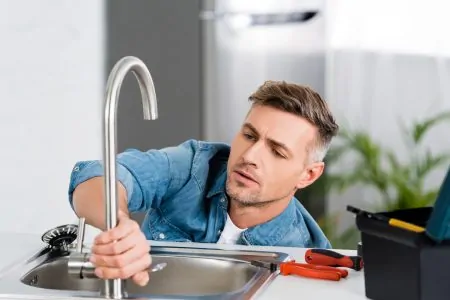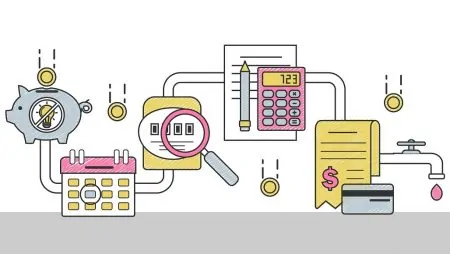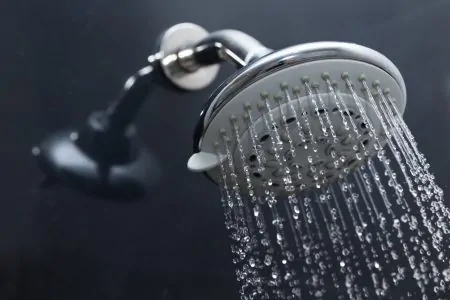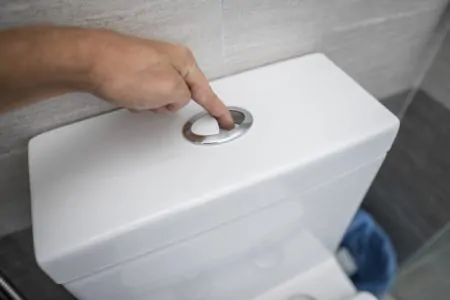Is water conservation something you want to incorporate into your everyday life but you aren’t sure how to start? Do you have kids and would like to teach them to conserve water as well?
Since the 1980s, the rate of water use has been increasing worldwide. According to the 2019 United Nations World Water Development Report, world water usage has risen by about 1 percent per year. Experts predict the demand for water will continue to increase at the same rate globally until 2050 (1).
It’s easy to understand these statistics because, for one, the population is growing. But also, people are generally using more water. From homes to food processing industries, the use and waste of water have skyrocketed (2).
The increased usage has resulted in consequences.
Water Stress Is Real
Currently, over two billion people live in areas of high water stress. Additionally, about four billion people experience severe water scarcity during at least one month of the year. By 2050, seven billion people will face water scarcity or stress conditions.
Water stress comprises more than just a scarcity of water. It also includes a reduced quality of and accessibility to water.
See why we need to conserve water? But how do we do this? You may think you’re already using water mindfully, but we have over 200 more ways to conserve water.
Our tips will help you conserve water at home and outdoors. You’ll also find tips for kids, pets, the office, and your community.
- Saving Water In the Kitchen
- Saving Water In the Bathroom
- Saving Water Doing Laundry
- Saving Water Gardening
- Saving Water with Swimming Pools
- Saving Water Car Washing
- Saving Water with Kids and Pets
- Saving Water in the Workplace
- Saving Water in the Community
- Saving Water With Leak Detection
- Start Saving Water Today

Saving Water In the Kitchen

Did you know?
In the United States, food waste contributes 25% of all freshwater used year.
That’s approximately 80 billion gallons of water being wasted each day.
- Instead of running water waiting for it to heat up, install an instant water heater under your kitchen sink.
- Catch the water in a bucket if you absolutely need to run your tap as you wait for temperatures to change. You can use that for drinking water or for rinsing dishes.
- Use a WaterSense faucet to conserve water. These products can save you 20 percent more water (3).
- If you have a dishwasher, use it. A certified dishwasher will save you over 3,800 gallons of water over its lifetime (4).
- Newer dishwasher models typically clean more thoroughly than older ones. So feel free to cut back on the rinsing if yours is new.
- Simply scrape dishes before putting them in the dishwasher. Skip the pre-rinse to save water.
- Got food stuck at the bottom of your pot or pan? Soaking cookware or dishes for a while before washing saves more water than scraping them under running water.
- If you wash dishes by hand, avoid running the water while you wash. Instead, use one bowl with soapy water and the other with water for rinsing.
- When washing dishes by hand, keep your faucet turned off while you wash, until you’re set to rinse multiple dishes.
- Shop smart. If you’re buying a new dishwasher, look for energy-efficient models using the Consortium for Energy Efficiency website.
- Let the dishes stack up until you have a full load to throw in the dishwasher. While it may not look the most pleasant, it saves up to 1,000 gallons a month.
- Make the wash quick. If you can, choose the quickest wash setting on your dishwasher.
- Have one glass for drinking water or use a refillable water bottle. That way, you’ll wash fewer cups every day.
- Water-conserving ice makers go a long way to save water. Invest in one.
- Drop an ice cube by mistake? Place them in a plant pot — they won’t care about the 5-second rule.
- Want to get your two liters every day without waste? Keep a bottle or pitcher of drinking water in the fridge instead of running the tap — no drop wasted.
- Cook with as little amount of water possible. Trust us when we say your food will taste better anyway.
- Kitchen multitasking tip? Don’t leave your tap running while you work.
- After washing vegetables, don’t throw away the water. Water your houseplants instead.
- Try steaming your veggies instead of cooking. It preserves more vitamins anyway.
- Steam vegetables over that pot of rice or pasta you’re boiling. You’ll wash fewer dishes too.
- Got leftover water from boiling pasta or veggies? You can water your plants with that — just wait until it cools.
- Reuse water from steaming and cooking veggies to make a rich soup.
- Use the right size cookware to avoid wasting excess water.
- Eat more plants — animal farming consumes much more water than plant farming. For example, the water footprint of six ounces of steak is 674 gallons, whereas for a salad serving, it’s only 21 gallons (5).
- If you can, switch to more plant-based milk. Cow’s milk has the highest water footprint (6).
- Already plant-based? Soy and oat milk have the lowest water footprint — lower than almond milk (7).
- Go easy on processed foods because they take a lot of water to produce. If you add more fresh fruit, veggies, and whole grains to your diet, you’ll be saving water too (8)!
- Even if you can’t cut meat forever, going meatless once a week will go a long way.
- Whenever you eat meat, dairy, and eggs, choose pasture-raised products. Grass is less likely to need irrigation — better for water conservation.
- Thaw your food in the fridge instead of in a bowl of water or under running water.
- Boiling water for your morning caffeine fix? Only boil what you need; no need to fill up the kettle.
- We love composting! Try it out and use your garbage disposal less to save water.
- Food waste costs the U.S. 25 percent of its freshwater consumed per year (9). Waste less food to save more water (10).
- Attack kitchen floor spills as soon as they happen. This keeps you from mopping the entire space so often.
Saving Water In the Bathroom
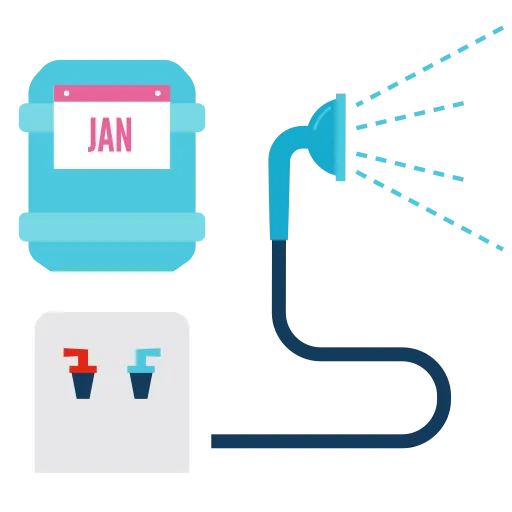
Did you know?
The average shower taken in the US consumes 17.2 gallons of water.
That’s the equivalent of an entire months supply of drinking water!
- The average American shower uses about two gallons of water per minute. If you keep your daily shower under 5 minutes, you can save up to 1,000 gallons per month if you used to take long ones (11).
- Switch out your high-flow shower head for a WaterSense certified one.
- Install an instant water heater in your bathroom to avoid running and wasting water while you wait.
- Just use cold water if it’ll do, instead of using hot water.
- When washing your hands, turn off the faucet while you lather.
- Install water-saving aerators on all of your faucets.
- Skip the shower when you can — especially during freezing winters!
- Shower with a bucket. It may feel stone-age, but you’ll save a lot of water.
- Remember to plug your bath before you start running it. Just adjust the temperature as you fill.
- If you do run the tap with the bath unplugged, collect water in a bucket for your plants.
- Keep it strictly showers at home. When you do have a bath, it’ll feel like a real treat.
- If you can’t do without baths, bathe in a partially-filled bathtub.
- Use a bar soap instead of shower gel since moisturizing gels require more water for rinse off (12).
- Brushing your teeth or shaving in the shower? Turn off the water while you do so.
- If you brush your teeth at the sink, just turn off the water while you’re doing it. You’ll be saving 4 gallons a minute.
- Turn off the shower while you wash your hair.
- Low-flow toilets use as little as 1.6 gallons, as opposed to the usual 5 to 7 gallons per flush. Switch to low-flow to save water (13).
- Nifty toilet water-saving trick? Place a full plastic bottle in your toilet tank to reduce the amount of water used per flush.
- Only flush when you do number two or after multiple number ones. Gross, but will save water.
- Flush with a bucket instead of using your WC.
- Avoid flushing things — tissues, floss, cotton wool — to dispose of them. Just use a trash can.
- If your toilet was installed before 1992, consider switching it out for a WaterSense toilet.
- Try a dual-flush toilet. Dual-flush toilets systems have a half-flush option for liquid waste and a full-flush for solid waste.
- Plug the sink instead of running the water to rinse your razor.
- Install a steam shower. They use less water than traditional showers and are very relaxing.
- Hire a GreenPlumber to help reduce your water, energy, and chemical use.
Saving Water Doing Laundry
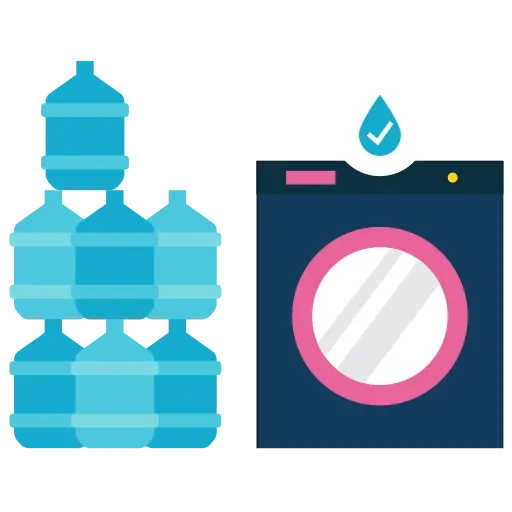
Did you know?
A water-efficient washing machine can save up to 7,000 gallons per household per year.
That’s the equivalent of an entire years supply of drinking water for 38 people!
- Use the right amount of water to match the size of your load of laundry.
- Reuse your towels whether at home or at a hotel.
- Make sure to have a full washing machine load before you wash.
- Avoid overloading your washing machine. Overloading could cause your machine to leak.
- Watch out for the permanent press cycle — it uses extra water for the additional rinse.
- Air-dry your laundry. Saving electric energy saves water too.
- Wash dark clothes in cold water to save water and energy. It also helps the clothes retain their color.
- Don’t wash your clothes so often. Half the time they aren’t dirty enough to warrant a wash anyway.
- Buy energy-saving washing machine models using the Consortium for Energy Efficiency website.
- Ask your plumber to re-route your greywater to trees and plants rather than the sewer line.
Saving Water Gardening
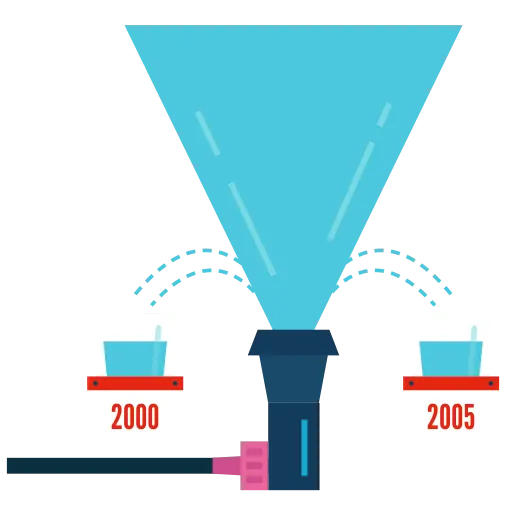
Did you know?
The average garden hose sprinkler uses about 1,020 gallons of water per hour.
That’s the equivalent of 5.5 years drinking water for one person!
- When installing a lawn, choose a lawn mix that matches your climate and site conditions.
- If you garden, stick to native species that don’t require additional watering.
- Don’t plant grass in hard-to-water areas such as steep inclines and isolated strips along sidewalks and driveways.
- Plant native shrubs and groundcovers to reduce your lawn space.
- Protect against evaporation and keep plants cool by using organic mulch.
- Use spring and fall as planting seasons — there is more rainfall and less need to water.
- Consider xeriscaping. This landscape method uses low-water-use plants to conserve water.
- Fertilizer may make plants grow faster, but it also reduces useful soil water content. Use only what you need; don’t over-fertilize.
- Aerate your lawn often to ensure water penetrates instead of just running off.
- Don’t overwater your lawn. It just needs it two to three times weekly. Your lawn only needs 1 to 1 ½ inches of water per week (14).
- Look for WaterSense labeled irrigation controllers.
- Set up your irrigation system properly to avoid overwatering.
- Water only when necessary. If you can’t push a 6-inch screwdriver into your lawn, you’re underwatering.
- Use a watering can to ensure you’re not over-watering and save water!
- Leaves a lighter shade of green or yellow? Young shoots wilting? Algae growing? You’re probably overwatering.
- Set a monthly “water budget” for your landscape based on the water needs of your plants.
- Use a rain barrel (if local regulations allow) to catch water for watering the lawn, washing the car, etc. Just don’t drink it, and keep it covered with a fine-mesh screen to avoid mosquito breeding.
- Water your lawn early in the morning or in the late evenings. Cooler temperatures will reduce water loss by evaporation.
- Avoid watering your lawn when it’s windy — you’ll be losing most of the water to evaporation.
- Water deeply instead of frequently.
- Group plants with the same watering needs together to avoid overwatering or underwatering.
- If you have hanging baskets, planters, and pots, place ice cubes on top of the soil to water without overflow.
- Set a timer when using the hose as a reminder to turn it off.
- Make sure your sprinklers are actually spraying the lawn, not your sidewalk or driveway.
- If water keeps running off your lawn, split your watering time. Shorter periods allow the soil to absorb water better.
- If it’s going to rain, turn off your sprinklers.
- Make sure you know how to shut off your automatic watering system in case of malfunctions or rain.
- Don’t forget to adjust the watering schedule to match seasonal weather conditions and landscape requirements.
- With automatic sprinklers, you can set up moisture or rain sensors. These prevent sprinkling when it’s wet.
- Make sure your sprinkler delivers big drops of water close to the ground. Smaller drops and mist tend to evaporate before even hitting the ground.
- The kids want to play with sprinklers or a water toy? Let them play on the dry parts of the lawn — two birds, one stone.
- Using a drip-irrigation system or hand-watering your garden could cut your water use in half.
- Consider hiring a pro to install and maintain your irrigation system to keep it working efficiently.
- The best time to check your irrigation system’s efficiency is in spring.
- Set your lawn mower blades one notch higher since longer grass holds more soil moisture.
- Leave lawn clippings on your grass to cool the ground and keep moisture in (15).
- It’s okay if your lawn goes brown in the winter. Dormant (brown) grass only needs to be watered once a week or once every two weeks — less if it rains (16).
- Weed your lawn and garden regularly. This reduces the demand for soil water as weeds compete for water and nutrients.
- If you have hanging plant pots, use ice cubes for watering to prevent water spillage.
- Attend a landscape class hosted by a water provider. These workshops teach you the most water-effective ways of landscaping.
- Leave lower branches on trees and shrubs and allow leaf litter to accumulate on the soil. This keeps the soil cooler and reduces evaporation.
- Ask your local conservation office about xeriscaping with water-thrifty trees, plants, and ground covers.
- Install gutters and downspouts to collect roof water.
- Directing water from rain gutters and HVAC systems to water-loving plants is easy but effective.
- Winterize outdoor spigots when temperatures dip below freezing to prevent pipes from leaking or bursting.
- To save hot water and energy, consider insulating your hot water pipes.
- Wash patios, sidewalks, and driveways with a broom instead of a hose.
- If you have an evaporative cooler, direct the water drain to the plants in your landscape.
- Know where your master water shut-off valve is — you can save water if you have a burst pipe.
Saving Water with Swimming Pools
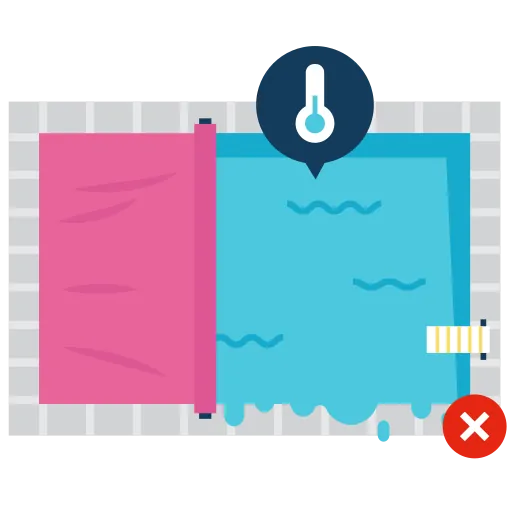
Did you know?
A swimming pool naturally loses about 1,000 gallons (3,785 liters) a month due to evaporation.
That’s the equivalent of an entire months supply of drinking water for 67 people!
- Cover your pool to stop water losses from evaporation — it’ll keep your pool clean too.
- Install recirculating pumps for your swimming pools, fountains, and ponds.
- Keep pool water cool to reduce evaporation.
- Check your pool system’s shutoff valve regularly. If the water level stays higher than normal and overflows when in use, call your plumber.
- When back-washing your pool, consider using the water on salt-tolerant plants in the landscape.
- If possible, avoid installing waterfalls and sprays in your pool as they increase water loss by evaporation.
- If you want to have a fountain, install trickling or cascading fountains. These lose less water to evaporation than spray fountains.
- Limit the use of your pool heater, if you have one, to reduce evaporation loss.
- Avoid overfilling your pool. Overflowing pools lose more water due to splashing.
- Avoid splashing water excessively while playing in the pool.
- Join a community pool instead of building a private pool.
Saving Water Car Washing
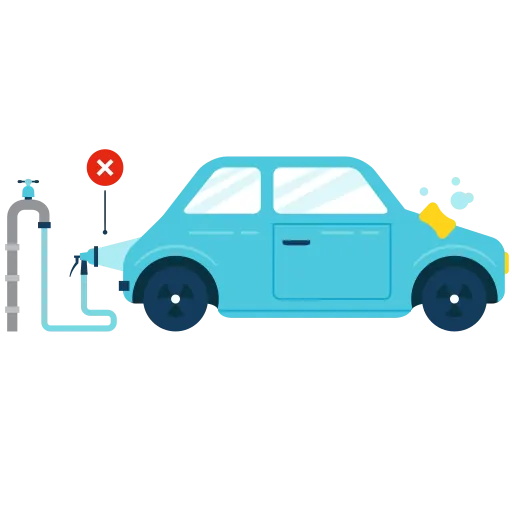
Did you know?
A home car wash can go through 80 to 140 gallons (300 to 530 liters) of water in a single wash.
That’s the equivalent of a days supply of drinking water for 220 people!
- If you can, use car washes that conserve and recycle their wash water.
- You can also just wash your car on the lawn and water your grass at the same time.
- Self-service car washes often use the least amount of water. Their high-pressure hoses have a pistol grip and can be turned on and off easily.
- Turn the hose off when you wash your vehicle. You’ll save up to 100 gallons every time.
- A squeeze (pistol grip) nozzle for your hose makes car washing more water-efficient. You don’t have to turn the tap to start and stop the flow.
- Better still, wash your car with a bucket and sponge!
- Use porous material for walkways and patios to prevent wasteful runoff when you wash your car.
Saving Water with Kids and Pets
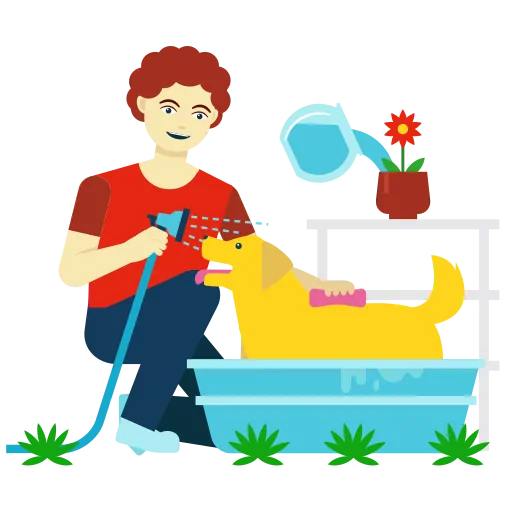
Did you know?
A small drip from a faucet can waste as much as 34 gallons (128 liters) of water a day.
That’s the equivalent of a days supply of drinking water for 64 people!
- Teach children to turn off faucets tightly after each use.
- Give your pets a wash outdoors, in an area of your lawn that needs water.
- When you clean out your fish tanks, water your non-edible plants instead of throwing away the water.
- If you change your pet’s water, you can also give the old water to your plants or trees.
- Encourage your kids’ school to teach and promote water conservation.
- Teach kids to bring a water bottle to school.
- Reward your kids when they follow your water-saving tips.
- If you can, avoid toys like water tables that require a constant flow of water.
- Making your own pet food will help you control the ingredients and the water consumed. Be sure to talk to your vet first about nutritional needs.
- Buy conservatively made pet products like hemp dog toys, collars, and leashes.
Saving Water in the Workplace
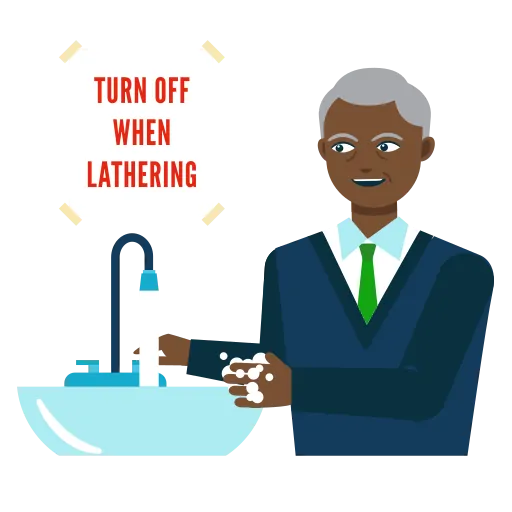
Did You Know?
Most workplaces can reduce their water consumption by as much as 30% with free or low-cost measures.
Many of which are just a question of changing common habits.
- First things first: Conduct a water use inventory and evaluate your organization’s water usage.
- Draft a policy statement to show your company’s commitment to water conservation.
- If you’re a business manager, prioritize saving water and lead by example.
- Post a leak hotline in the bathrooms and kitchens to report leaks or water waste to maintenance personnel.
- Install sub-meters if you can to closely track your water savings.
- Have maintenance personnel regularly check for leaks and other water waste.
- Consider recycling your company’s water if you use processed water.
- Include a water-saving tip in your employee newsletter or email sign-off.
- Post quick water-saving tips in staff common rooms and notice boards — with your employer’s permission, of course.
- Create a company water-saving goal and plan a celebration once that goal is met.
- Invite your water utility conservation staff to your organization for Earth Day and other environmental events to help promote water savings.
- Run a water audit to learn your facility’s recommended water use (17).
- Use the information from your water audit to monitor the utility bills to analyze your monthly water use.
- Always keep water use in mind when buying equipment for your facility or business.
- Choose air-cooled appliances over water-cooled ones to save more water.
- If possible, always choose WaterSense labeled toilets, sink faucets, urinals, and showerheads.
- Plan and incentivize an employee leak-hunting campaign.
- Bring a water bottle to work.
- Install an under-sink water heater if you have an office kitchen.
- Turn off the water supply to unused areas of your facility to reduce waste from leaks or unmonitored use.
- Ask employees for suggestions on saving water and give prizes for the best ideas.
- Publish your company’s monthly water use to monitor your progress toward water-saving goals.
- Hire a WaterSense irrigation partner to help with your landscape.
- Consider sending your company landscaper to an irrigation workshop.
- Reduce office use of plastic water bottles to lower your carbon (and water) footprint (18).
- Set timers for any decorative fountains and use them only during work or daylight hours.
- Wash company vehicles as needed and not on a schedule.
- If using a commercial car wash for company vehicles, choose those that recycle water.
- Send this article to your workmates — they probably need it!
Saving Water in the Community
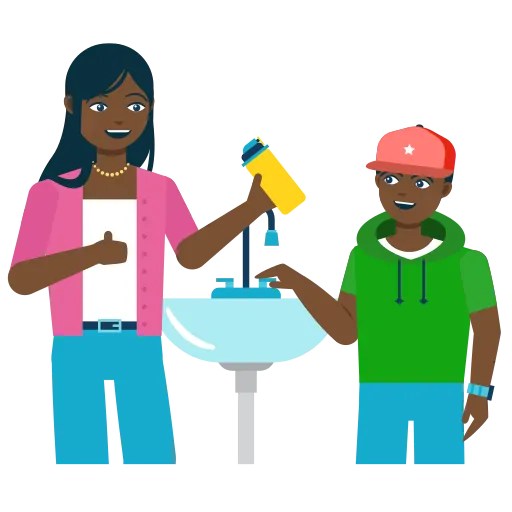
Did You Know?
Up to 30% of fresh water supplies are lost due to leakage in developed countries, and in some major cities, losses can run as high as 40% to 70%.
By helping educate one another we can bring about change.
- Tell others in your neighborhood and community about water conservation.
- Reduce the consumption levels of others by donating unwanted clothes and other items that took water to produce. By passing down things you no longer need, you can save water.
- If you shower at the pool or beach, keep it short.
- Always turn off beach and pool showers after use — tightly too.
- Don’t forget to turn off the faucet after using public washrooms.
- Report any leaks in fire hydrants, plumbing, or other public facilities so they can be repaired quickly.
Saving Water With Leak Detection
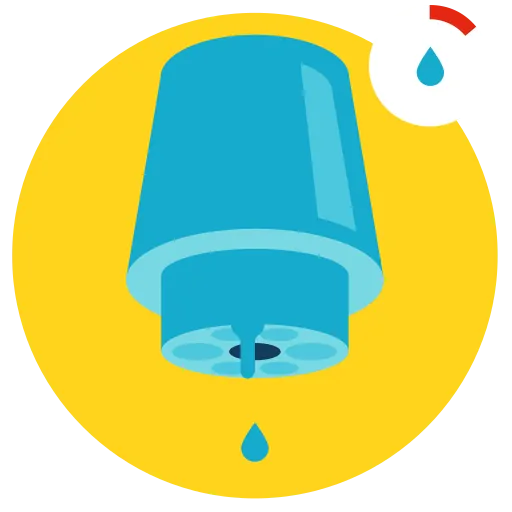
Did You Know?
The average family can waste 180 gallons per week, or 9,400 gallons of water annually, from household leaks.
That’s the equivalent of an entire years supply of drinking water for 52 people!
- Did you know? Ten gallons per day of your water footprint (or 14% of your indoor use) is lost to leaks (19).
- A 1/16-inch opening in your faucet could waste 100 gallons a day. Check your home for leaks monthly.
- Toilet leaks are hard to find. Check your toilets at least once a year.
- Leak detection tip: Put food coloring in your toilet tank. If the color seeps into the bowl without flushing, you’ve got a leak.
- If your toilet keeps running, you may have a leaky toilet flapper. It’s typically best (and cheap) to replace the whole flapper.
- Don’t forget to check whole-house humidifiers and evaporative coolers for leaks.
- Use your water meter to check for leaks.
- Learn to detect bathroom leaks. Check areas around the tub, tub faucet, tub drain, tub overflow, shower door, and toilet.
- Report all broken pipes and faulty sprinklers to property owners or your local water provider.
- Soft, wet spots on your lawn could indicate an underground leak.
- Check your pool for leaks often and fix any leaks as soon as possible.
- Look out for leaks under or behind the fridge.
- Fix dishwasher and washing machine leaks as soon as you can. It prevents bigger issues from popping up.
- Check your in-ground irrigation system each spring before you turn it on to make sure there’s no damage from frost or freezing during the winter.
- Outdoor leaks are easy to miss. Don’t forget to check outdoor faucets, pipes, and hoses.
- If you just can’t find the leak in your irrigation system on your own, it might be best to call a professional.
- Check your sprinkler system valves for leaks and keep sprinkler heads in good shape.
- If you have an automatic refilling device, check your pool periodically for leaks.
Start Saving Water Today
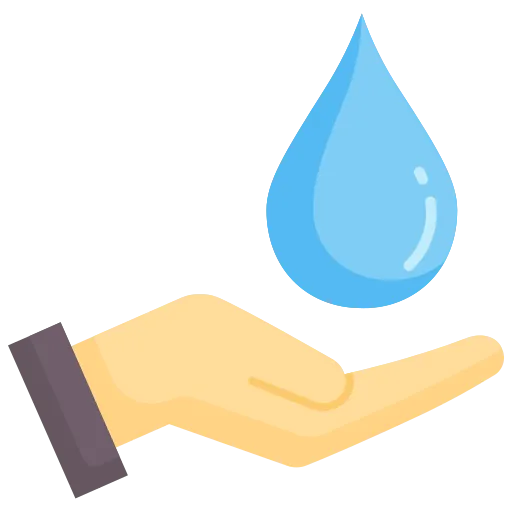
There are so many ways to conserve water. But it’s important to remember that these tips take time to implement.
They also work best when we make them permanent lifestyle changes.
Conserving water is important for our environment. So if you can afford to, choose energy-efficient appliances and plumbing — they save so much in the long run. It costs nothing, however, to use simple tips like being mindful of leaving taps running.
We hope you find the other tips practical, inexpensive, and easy to integrate into your daily life. Don’t forget to teach kids, too!
Which of these tips sound the most helpful to you? How do you conserve water? We’d love to know — please share in the comments.
Also, you can help your community learn ways to conserve water by sharing this post with them.
